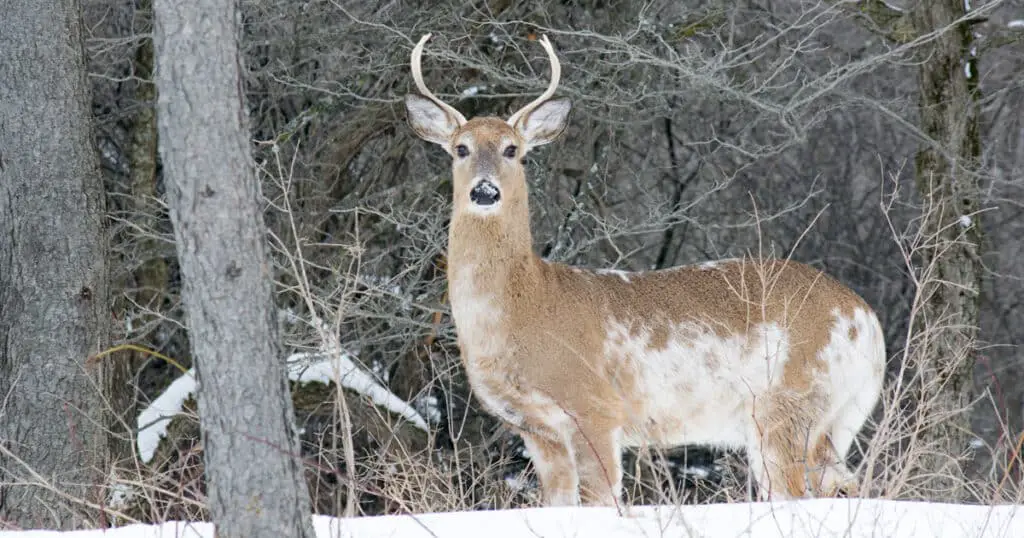If you live in an area populated with deer in North America, you are probably familiar with the appearance of White Tailed Deer. But the rarely seen Piebald Deer have a genetic mutation that can manifest in various amounts of white (instead of brown) hair.
Not to be confused with albino deer, which are totally void of pigment, piebald deer may have small patches of white, or may be almost pure white with small patches of normal brown hair.
Piebald deer may also have other distinguishing characteristics such as shortened legs or a misaligned spine. This article will cover piebaldism, what causes the mutation, whether you should shoot piebald bucks, and more.
By the end of it you should know almost everything there is to know about Piebaldism in deer.
What is Piebaldism?
Piebaldism is a rare genetic abnormality in whitetail deer. While the most common sign of piebaldism is the distinctive white coat, piebaldism can also manifest in a range of deformities including:
- Skeletal misalignment
- Shortened legs
- Crooked legs
- Bowing of the nose
- Internal organ deformities
- Deformed hooves
- Shortened jaws
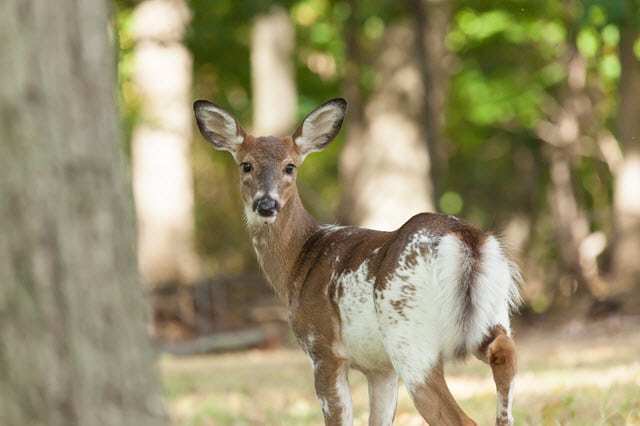
The manifestation of the genetic abnormality varies, thus piebald deer come in a range of colors and variations. There is no piebald standard. Some deer have hardly visible white spots and blend in with the rest of the population, while others look very unique and stick out.
Some look like they have been splashed with white paint, others look like they have been splashed with brown paint, and others look spotted or have a white/brown pattern.
Piebald deer with severe deformities can even look like a different species of animal, or a cross between a deer and another animal.
How Rare is a Piebald Deer?
Piebaldism in deer is extremely uncommon and affects less than 2% of the whitetail population. Even avid outdoorsmen may only see one once in a lifetime.
However, the instances of piebaldism can vary widely depending on the region and local deer population.
There are even rare examples of almost entirely white or partially white herds of deer.
For example, the Seneca Army Depot in New York was fenced in during the 1940’s, along with the deer living within the compound. There were at least two deer among the herd that were carrying the piebald gene.
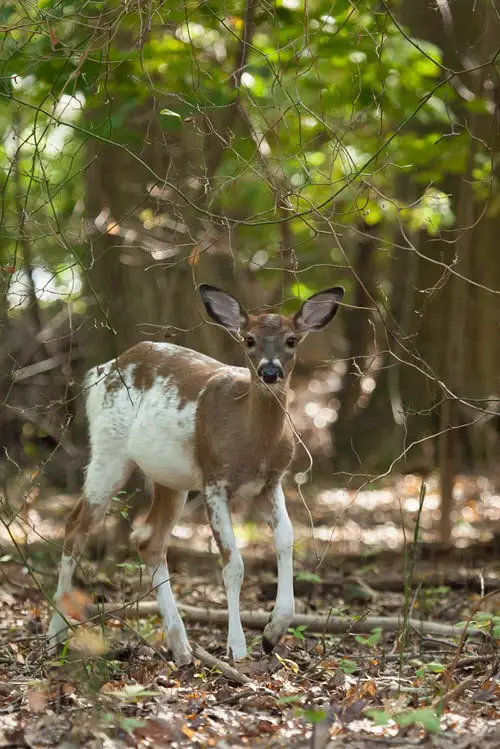
Since the herd was isolated, the recessive gene spread quickly and resulted in a large ratio of piebald deer. The site became a sensation and was even open to the public for tours for a period of time, allowing people to view the unique Seneca White Deer herd.
What Causes Piebaldism in Deer?
Piebaldism is the result of a genetic abnormality that leads to a lack of pigmentation in certain places on the body.
There have not been extensive studies on whether there are factors in nature that impact the likelihood of this genetic abnormality, but what is known for certain is that it is rare.
Geneticists also note that although both albinism and piebaldism result in changes in pigment, the genetic causes of piebald deer are not the same as those that contribute to albinism.
Are Piebald Deer Healthy?
Most piebald animals are born with symptoms that do not impact their day to day quality of life and they are perfectly healthy, normal deer in all ways other than their appearance. In fact, some piebald deer are indistinguishable from those without the mutation.
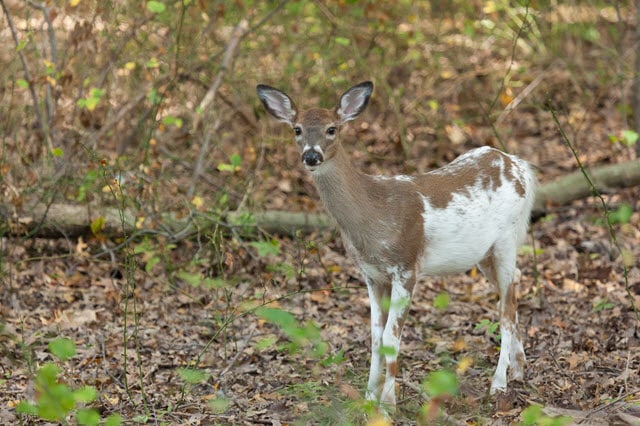
However, some piebald deer are born with more severe abnormalities.
Issues such as misaligned spine or crooked legs can become painful for the deer and make it more difficult to move and live a long life. Internal organ deformities may also contribute to an overall shortened life span.
Although more research needs to be done on piebald deer, there was a recent case study by Missy Runyan, a wildlife rehabilitator in New York. She was called to help a distressed fawn in the Spring of 2017. She immediately recognized it as a piebald fawn and it was plagued with severe birth defects including life-threatening internal organ issues.
Before the fawn passed away, Missy was able to scan the fawn’s body and study the internal abnormalities. This fawn’s organ defects would have made it impossible to survive in the wild.
Despite this study, severe abnormalities in piebald deer are rare, and most piebald animals live among other deer and do not require any special environmental factors to survive and thrive.
Further, deer are resilient animals, so even individuals born with abnormalities normally learn how to work around them and adjust.
Piebald Deer Symbolism
Piebald deer symbolism mostly stems from Indian cultures. Indian tribes respected piebald deer as a spirit in the process of transforming to or from the spirit world.
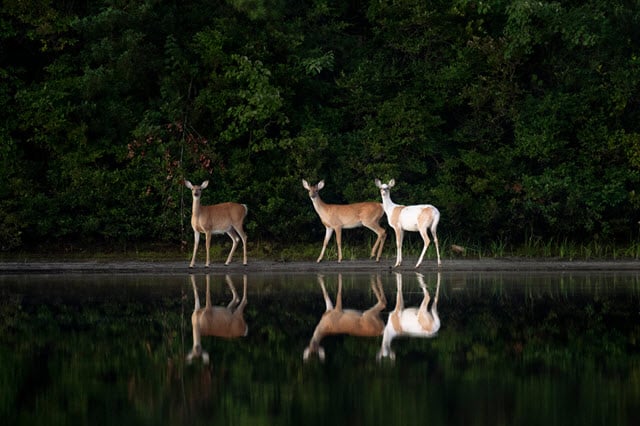
Sighting a piebald or white deer was a sign that a big change was coming to their world. They believed that this time of transformation was a vulnerable time, so the transformation would die with the mortal body if killed by a hunter.
As a result, the piebald deer was revered. The killing of one was not allowed.
The Indian tribes lived and died by this rule, even in times when food supplies were low. This belief has been passed on and is still held by some communities today.
Some researchers today believe that the only reason we will have a population of piebald deer today is because of the preservation efforts of generations before.
The Symbolism of White Deer
The sighting of a white animal was believed to be a sign of prophecy. That’s part of the reason Indian tribes have these beliefs about piebald deer. Other cultures also carry this belief because white is generally a profound color in symbolism.
White is symbolically the color of light which eradicates dark and evil. In symbolism, white can also mean:
- Purity
- Vision
- Clarity
- Renewal
- Cleansing
- Spirituality
Even in the absence of any spiritual or cultural connection, those who spot a piebald deer often report different feelings toward the animal, simply because it is such a rare sighting.
Piebald Deer Symbolism in Hunting
Unlike the beliefs held by ancient Indian cultures, the sighting of a piebald deer in hunting culture can mean something entirely different.
White deer have long been the subjects of hunting myth and legend. Just seeing a piebald deer could historically be a negative experience for a superstitious hunter. Some hunters would abandon their hunt immediately at the site of a piebald animal.
Killing a piebald deer brings along a whole other set of myths and superstitions.
Some hunters believe that killing a piebald buck brings a curse of bad hunting luck. Other myths are even more stark. In parts of Europe, for example, some believe that hunters who kill piebald or white deer will die within a year.
There are old stories of hunters inadvertently killing a piebald buck and praying for forgiveness so they could continue on with their hunting careers.
About Piebald Whitetail Deer
Since White Tailed Deer are a prey species, being solid or mostly white comes with some disadvantages.
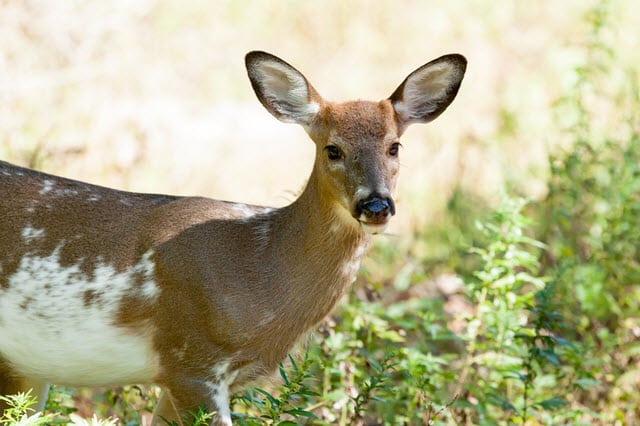
First, piebald deer are more visible to predators, including hunters. White hair makes it very difficult to blend into most deer environments. Additionally, if a piebald animal is born with other physical abnormalities such as an arched spine or short legs, it will be harder for them to run from predators.
Aside from predators, some abnormalities in deer with piebaldism naturally lead to a shorter life span.
Internal organ mutations can lead to sudden death, and extended jaw lines can make it difficult to eat their preferred diet.
Overall, even piebald deer born with less obvious mutations are at a disadvantage from birth.
Melanistic vs Piebald Deer
Melanistic deer are deer that were born with a genetic mutation that causes the overproduction of pigment. As a result, their hair is very dark, sometimes even black. Melanism in deer is extremely rare, even more rare than albinism.
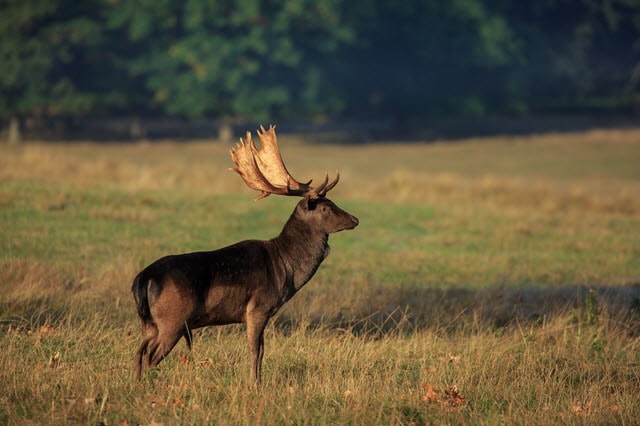
The main difference between a piebald deer and a melanistic deer is that the piebald deer has a genetic mutation that causes various levels of white hair, as well as other mutations discussed earlier. In contrast, the melanistic deer simply has extra pigment which causes their hair to be darker.
The first known sighting of a melanistic deer was in 1929. In the United States, reports of melanistic deer have been given in:
- Mississippi,
- Michigan,
- Virginia,
- Pennsylvania,
- Texas, and
- South Carolina.
But they can occur anywhere by genetic mutation.
Melanism is not known to affect any other part of the deer aside from hair color. But it may be an advantageous survival trait. In certain habitats, melanistic deer may be able to better blend with a region’s dark and thick cover.
Piebald vs Albino Deer
Albinism is a recessive trait present in mammals, birds, reptiles, fish, and plants. Albino deer are completely white with no body pigment whatsoever.
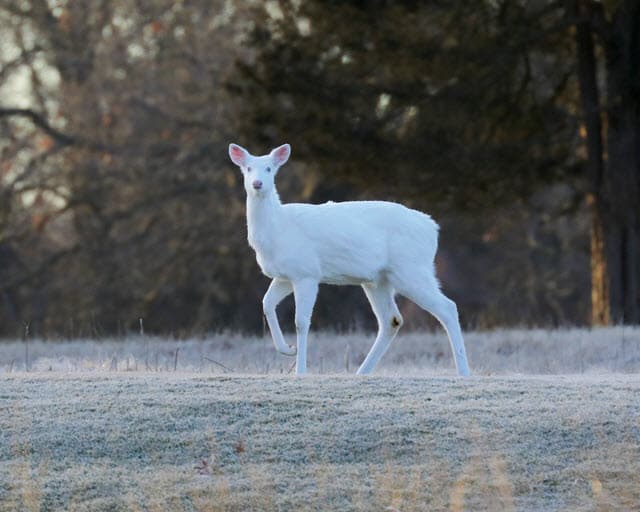
Deer with piebaldism, especially ones with lots of white coloration, can be confused with albino deer. But when comparing Piebald deer to Albino deer, you’ll find that the two are very different.
The main difference between a piebald and an albino deer is the piebald animal has a genetic mutation that causes various levels of white hair, as well as other mutations discussed earlier in this article. Albino deer, on the other hand, do not have the gene that manifests in the color of skin, hair, and tissue.
Other Facts About Albino Deer
Animals with albinism do not have the gene that is responsible for normal coloration of skin, hair, and tissue. The eyes of an albino are pink or red.
Albinism is not a desired trait for any animal, predator or prey. Being totally white makes it difficult to hide in any environment. In addition, many albinos have poor eyesight.
Albinism is a recessive trait, meaning both parents must carry the gene before it can occur in their offspring. An albino deer that breeds with another albino would have only albino fawns.
An albino deer that breeds with a normal deer with no albinism gene would produce normally pigmented deer, with half of their offspring carrying the albino gene.
When two carriers of albinism breed there is a one-in-four chance they will produce an albino offspring.
While albinism is not as rare as other genetic mutations in deer, it is still uncommon. Based on hunter reports, about one deer in 30,000 is an albino.
Should You Shoot or Hunt Piebald Deer?
Before shooting a deer with piebaldism, you should check your local hunting regulations. While some states have no laws protecting piebald deer, other states have very specific laws.
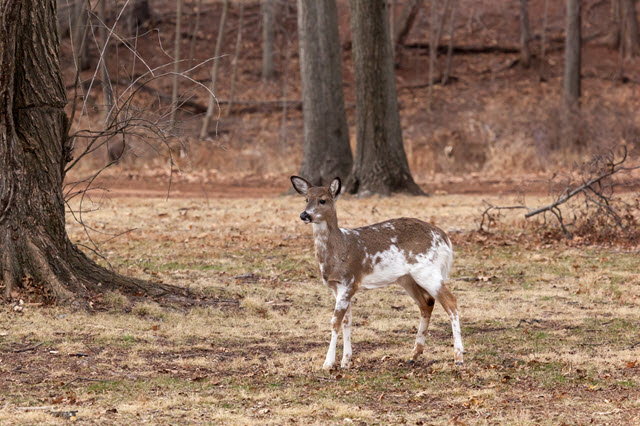
For example, Oklahoma required written permission from the state wildlife director to hunt piebald deer up until a few years ago. In Iowa, it is illegal to hunt deer that are “predominantly white,” or 50 percent white.
Aside from local law restrictions, there are different schools of thought when it comes to hunting deer with piebaldism.
The Argument For Hunting Them
Some hunters believe that there is intrinsic value in being able to hunt an animal that is more rare than its genetically typical counterparts. Further, they argue that ecologically there is no reason to give a piebald deer any more protection than a regular deer.
Many hunters argue that it’s wise to target these deer. They say that their problematic genetic abnormalities pose a threat to the herd.
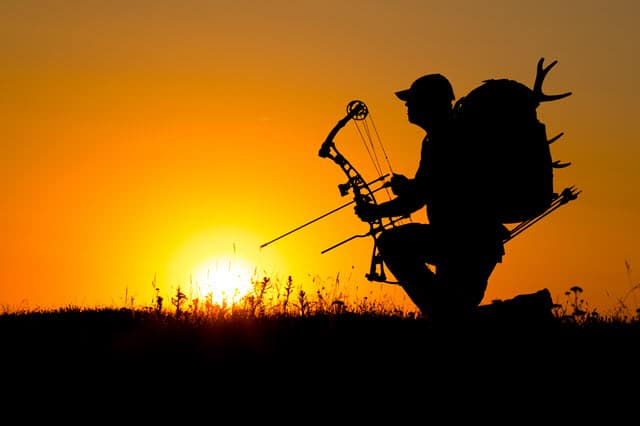
Taking these animals out of the environment will ensure that they are no longer able to breed and pass on their genes – and potential health problems that come with them – to offspring.
Pro-hunting piebald advocates also argue that laws protecting these animals are unfair and result in unintended consequences.
For example, there have been instances of hunters shooting what they thought to be a normal deer, only to find out when they got closer that it was a piebald deer.
Hunters argue that there is no good reason to punish these well-intended hunters.
The Argument Against Hunting Them
Those who are not in favor of hunting piebald deer say that it is an unnecessary act that kills significant symbolism in nature. In fact, there have been instances of hunters getting backlash after sharing their news of a kill on social media or in the newspaper.
Some also argue that these are rare animals that should be preserved for others to see.
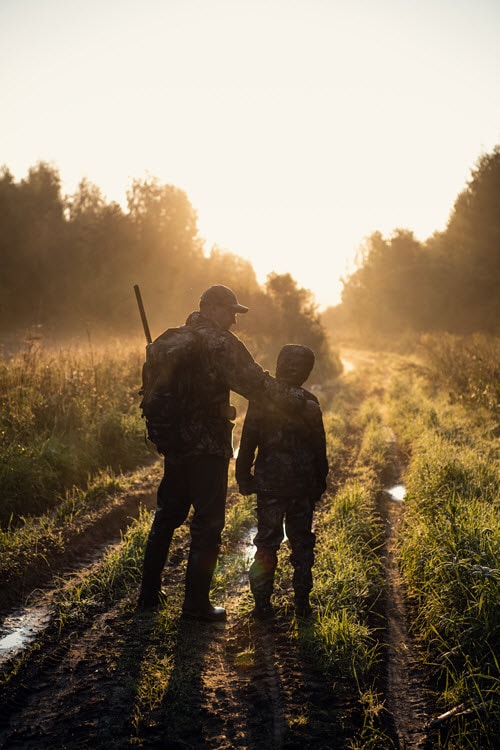
Any hunter will tell you they enjoy seeing piebald and albino deer in the wild. Many feel that the opportunity to see one should be left for other as well. They prefer that chance not be taken away.
Last, there are lingering myths and suspicions about hunting piebald deer that persuade hunters not to kill them. Whether it is superstition about bad luck, or inadvertently killing an important spirit, some hunters decide to not take the chance.
Whether you are pro- or anti-hunting piebald deer, most hunters recognize that even a sighting one of these deer is a rare treat.
Many hunters will never have the privilege of spotting a piebald deer in the wild and those that do report it as a highlight of any deer hunting trip.
Are Piebald Deer Worth Money?
Although piebald deer are rare, they are generally not worth much more than a genetically typical animal. It depends on where you live, and how common piebald and albino sightings are in your area.
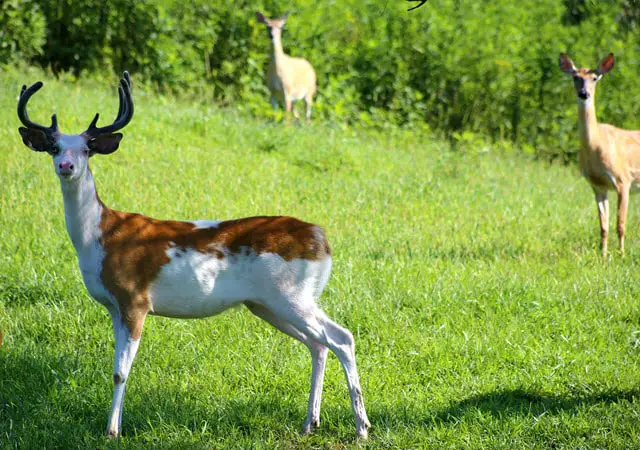
Some experts say that piebald deer could be worth $1500 more than a normal deer of the same size. Others say they are worth the same amount.
In recent years, social media has perpetuated the myth that piebald deer are worth tens of thousands of dollars. For example, several years ago, a hunter shared a picture of his piebald buck hunt on social media with a caption claiming he sold it to Cabela’s for $13,000.
The post went viral and eventually forced the hunter’s wife to come forward telling the community that they had not in fact sold it to Cabela’s at all.
Nonetheless, people still share this post from time to time. This perpetuates the idea that the piebald buck is very valuable.
If you are interested in selling a deer with piebaldism, check with local hunting experts. They will be familiar with the local population and market.
It is also wise to get a second opinion. Even some seasoned deer experts may not have a lot of experience with piebald deer.
Other Piebald Animals
Piebaldism in other animals usually refers exclusively to an animal that has a pattern of unpigmented spots on a pigmented background of hair.
In other words, black and white coloring. Piebaldism in these animals generally does not refer to other abnormalities like spinal misalignment or shortened legs like it does with piebald deer.
In addition to deer, piebaldism can occur in many other animals including birds, cats, dogs, foxes, horses, pigs, and snakes.
Some animals with piebaldism go by different names. For example, most people do not refer to spotted horses as piebald horses. Rather, spotted horses are called “pinto” – which translates to paint – horses.
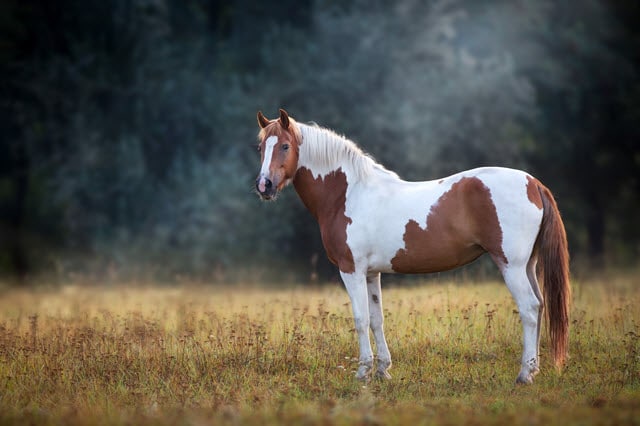
In many dog breeds the Piebald gene is more common than it is in deer. In dogs, the white parts of the fur show up in other pigmented coat patterns.
It can be difficult to distinguish a spotted dog from a truly piebald dog. Dogs with a white body and spotting on the head and neck are often called piebald.
While not as common, the piebald gene manifests in cows, ferrets, domestic goats, goldfish, guinea pigs, hamsters, rabbits, and rats.
Final Thoughts
The piebald deer is a rare and fascinating animal. The chances of piebaldism are less than 1 in 30,000, making a sighting of a deer that is piebald a special experience.
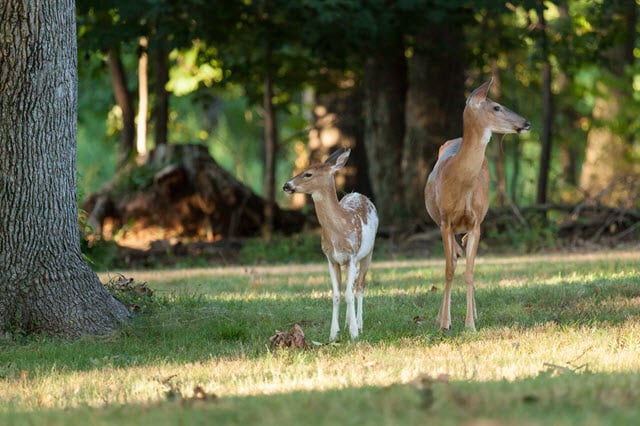
Whether you are an anti-hunting animal lover, or a lifelong sportsman, now you know a bit more about what causes piebaldism in deer, and what is behind the beautiful white coloring you may encounter in the wild.

